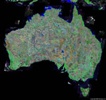John Howard’s Task Group on Emissions Trading has produced its report [PDF]. It concludes that an emissions trading regime is the way forward for Australia, but fails to suggest targets. It’s a very useful overview of how carbon trading mechanisms might be made to work, but has clearly been hamstrung by the current political realities in Australia. It remains to be seen how John Howard, with his noted aversion to targets for greenhouse gas reductions will handle setting up a trading scheme if re-elected – or how he will be able to ignore section 7.2.1.
Adopting a credible long-term aspirational goal for national emissions reduction is critical. It sets the framework for Australia’s overall abatement efforts. Such a goal could be described in terms of the percentage reduction in emissions from a particular point in time, or in terms of the maximum number of tonnes of CO2-e that Australia is aiming to emit by a particular year.
Some Aussie press coverage here and here. Science Alert commentary here. The Australian Stock Exchange is slavering at the bit.
The scope for handouts to industry through grandfathering, as has effectively happened in Europe, is huge. BBC Radio 4’s File On Four claims that the EU’s carbon trading scheme has increased electricity bills, given a windfall to power companies and failed to cut greenhouse gases:
Power generators received their allowances free of charge but were allowed to reflect the value of those in increased prices to customers, as if the companies had actually had to buy the allowances. Energywatch believes this increased electricity bills by about 7% in 2005. And according to one government estimate, that delivered windfall profits of up to £1.3bn to the generators in that year – higher than environmental campaigners had claimed last year.
No Right Turn has an interesting post on how this problem might be addressed in NZ, warning that badly set up emissions trading schemes amount to taxpayer handouts to emitters.
Like this:
Like Loading...
 The New South Wales government has decided that Sydney’s current water restricions are going to be permanent, because climate change projections suggest long term reductions in rainfall [Daily Telegraph(AU), ABC]. Meanwhile, CSIRO has released a report suggesting that three of the city’s great beaches could be lost to sea level rise. The Daily Telegraph reports:
The New South Wales government has decided that Sydney’s current water restricions are going to be permanent, because climate change projections suggest long term reductions in rainfall [Daily Telegraph(AU), ABC]. Meanwhile, CSIRO has released a report suggesting that three of the city’s great beaches could be lost to sea level rise. The Daily Telegraph reports:

